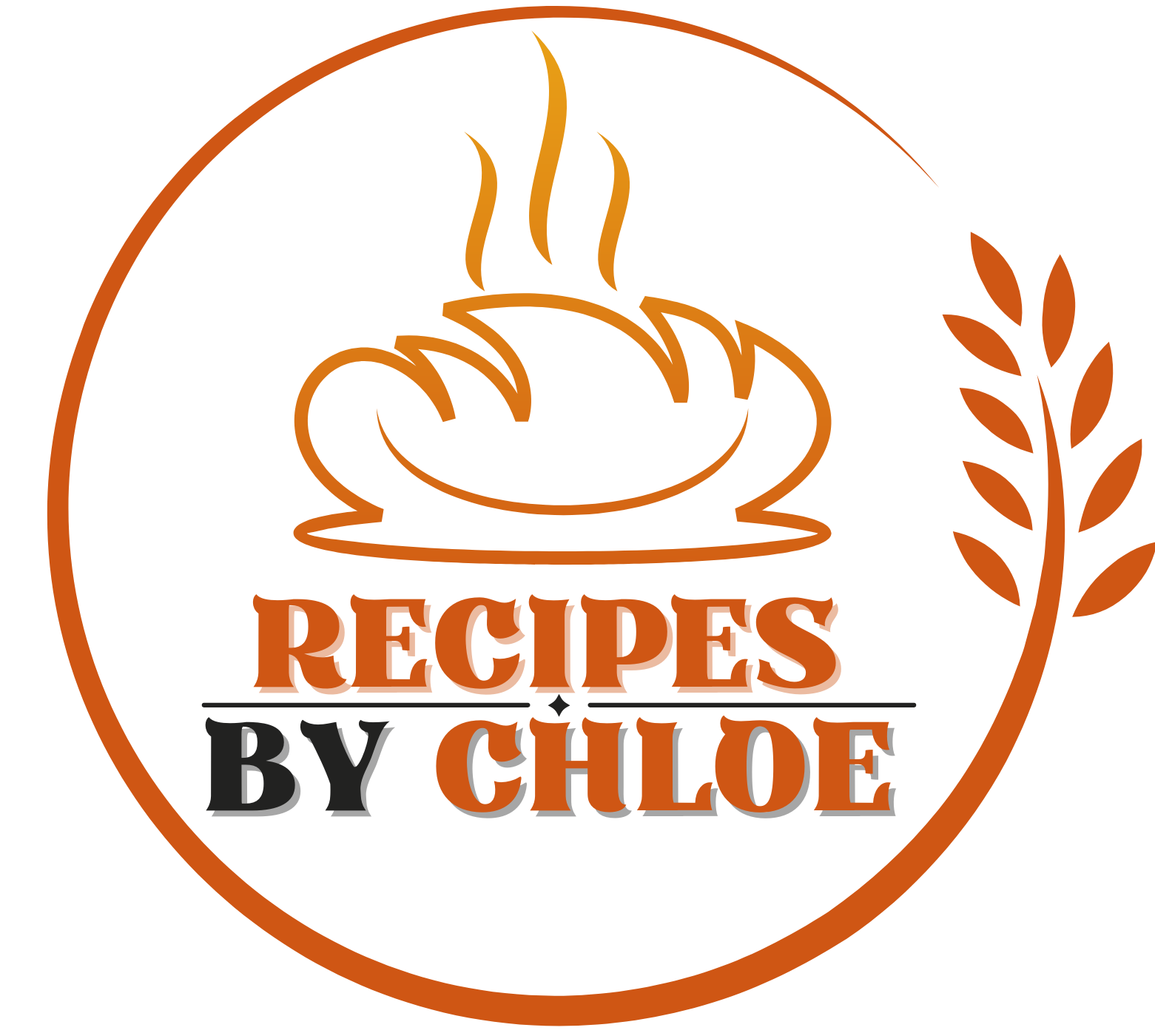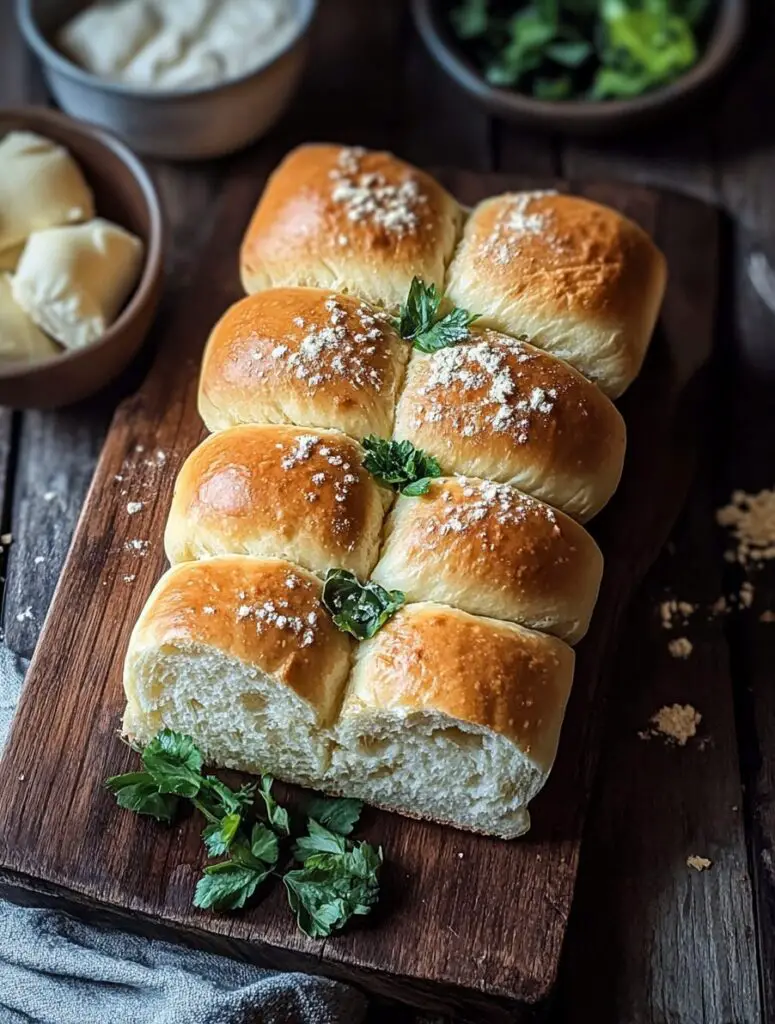This Vegan Pav Bread recipe showcases the art of plant-based baking, offering soft, fluffy bread with a golden crust. Perfect for pairing with curries, jams, or as a standalone treat, this recipe is a must-try for both seasoned bakers and beginners. Embrace the wholesome flavors and enjoy the rewarding experience of making this culinary classic.
Ingredients
- 2 cups all-purpose flour
- 1 tsp salt
- 2 tbsp sugar
- 2 1/4 tsp active dry yeast (1 packet)
- 1/2 cup warm water (110°F to 115°F)
- 1/4 cup unsweetened almond milk or soy milk, lukewarm
- 2 tbsp olive oil or melted coconut oil
- Additional oil for greasing
Directions
1. Activate the Yeast
- Dissolve sugar in warm water.
- Add yeast and let sit until frothy (about 5 minutes).
2. Mix the Dough
- In a large bowl, combine flour and salt.
- Add the yeast mixture, lukewarm milk, and oil.
- Mix until a dough forms.
3. Knead the Dough
- On a floured surface, knead the dough for 8-10 minutes until smooth and elastic.
- Place the dough in a greased bowl, cover, and let rise in a warm place until doubled in size (about 1 hour).
4. Shape and Proof
- Divide the dough into 8 equal pieces and shape into balls.
- Arrange the balls on a greased baking tray, spaced slightly apart.
- Cover and let rise again for 30-40 minutes.
5. Bake
- Preheat oven to 375°F (190°C).
- Bake the bread for 15-20 minutes, or until golden brown.
6. Finish
- Brush the baked bread with a small amount of oil for a glossy finish.
- Allow to cool slightly before serving.
Nutritional Information
- Calories: 180 kcal per serving
- Serving Size: 1 piece
- Servings: 8
Enjoy this delightful vegan pav bread, a versatile addition to your plant-based recipe collection!
Vegan Pav Bread: A Culinary Classic for Every Occasion
Vegan Pav Bread exemplifies the growing appeal of plant-based baking. This recipe, rich in flavor and texture, captures the essence of traditional pav bread while remaining completely vegan. The soft and fluffy interior, coupled with a golden crust, makes it a versatile addition to any meal or a delicious standalone treat. Whether you’re a seasoned baker or a novice exploring plant-based recipes, this bread offers a rewarding experience in the kitchen.
The Appeal of Vegan Baking
In recent years, vegan baking has transitioned from a niche practice to a culinary movement embraced by people worldwide. The focus is on creating baked goods that are not only free of animal products but also flavorful, nutritious, and satisfying. Vegan pav bread is an excellent example of this evolution. Traditionally made with dairy products, pav bread has been reimagined here with plant-based alternatives like almond milk or soy milk and olive or coconut oil. The result is a loaf that matches, if not exceeds, its non-vegan counterpart in taste and texture.
Baking vegan pav bread is more than a process—it’s a celebration of creativity, resourcefulness, and sustainability. By using simple ingredients that are readily available, this recipe offers a guilt-free indulgence that aligns with eco-conscious living.
Why Try Vegan Pav Bread?
- Versatility: Vegan pav bread is incredibly versatile. It can be paired with spicy curries, served alongside soups, spread with jam or vegan butter, or even enjoyed plain. Its soft texture and slightly sweet flavor profile make it adaptable to both savory and sweet accompaniments.
- Health Benefits: This bread is a healthier alternative to traditional pav. By replacing dairy products with plant-based options, it reduces saturated fat content while providing essential nutrients. The use of olive oil or coconut oil adds healthy fats, while almond milk or soy milk contributes vitamins and minerals.
- Accessibility: The recipe uses common pantry ingredients, making it easy to whip up even for those new to vegan baking. It doesn’t require specialized tools or advanced techniques, ensuring success for beginners.
- Cultural Connection: Pav bread has its roots in Indian cuisine, often paired with dishes like pav bhaji, vada pav, or misal pav. This vegan version allows plant-based eaters to connect with this rich culinary tradition without compromising their dietary choices.
The Science Behind Fluffy Vegan Bread
Baking pav bread is as much a science as it is an art. Achieving the perfect fluffy texture requires understanding the role of each ingredient and how they interact. Here are a few key elements:
- Yeast Activation: Yeast is the heart of bread-making. In this recipe, yeast is activated with sugar and warm water, creating a frothy mixture that ensures a good rise. The warmth stimulates yeast activity, while sugar acts as food for the yeast.
- Kneading: Kneading develops gluten, the protein network that gives bread its structure and chewiness. By kneading the dough for 8-10 minutes, the gluten strands become well-formed, resulting in a soft, elastic dough.
- Proofing: Allowing the dough to rise in a warm place lets the yeast produce carbon dioxide, which creates air pockets in the dough. This step is crucial for achieving the light, fluffy texture characteristic of pav bread.
- Baking: The oven’s heat causes the dough to expand rapidly in the first few minutes, a process known as oven spring. The golden crust forms as sugars on the surface caramelize, adding flavor and visual appeal.
Tips for Success
- Use Warm Liquids: Ensure the water and milk are warm (110°F to 115°F) to activate the yeast properly. Too hot, and the yeast may die; too cold, and it won’t activate.
- Check Dough Consistency: The dough should be slightly sticky but not overly wet. If it feels dry, add a teaspoon of warm water at a time until the consistency is right.
- Maintain a Warm Environment: For optimal proofing, place the dough in a warm, draft-free area. You can also use the oven with the light on for a controlled environment.
- Customize the Flavor: Enhance the bread with herbs, seeds, or spices for a unique twist. Garlic, sesame seeds, or dried rosemary can elevate the basic recipe.
The Joy of Homemade Bread
Making vegan pav bread at home is more than just a culinary task—it’s a sensory experience. From the moment you mix the ingredients to the aroma wafting through your kitchen as the bread bakes, every step is a reminder of the joys of homemade food. The sense of accomplishment when you pull golden-brown loaves out of the oven is unmatched.
For many, baking bread is also therapeutic. The tactile process of kneading, the anticipation during proofing, and the rewarding outcome of soft, warm bread make it a fulfilling activity. Moreover, sharing homemade bread with family or friends fosters a sense of connection and joy.
Vegan Pav Bread in the Bigger Picture
Beyond its culinary appeal, vegan pav bread aligns with broader values of sustainability and compassion. Choosing plant-based alternatives reduces the environmental footprint associated with dairy and other animal products. It’s a small but meaningful step toward a more sustainable lifestyle.
Additionally, vegan baking challenges traditional norms, proving that delicious, high-quality baked goods don’t need animal-derived ingredients. This shift opens up a world of possibilities for people with dietary restrictions, allergies, or ethical concerns.
Conclusion
Vegan pav bread is more than just a recipe—it’s an embodiment of creativity, culture, and conscious living. Its simplicity makes it accessible to all, while its versatility ensures it can be enjoyed in countless ways. Whether you’re savoring it with a hearty curry, slathering it with jam, or indulging in a plain, warm roll fresh from the oven, this bread is sure to become a staple in your kitchen.
The experience of baking pav bread connects us to the fundamentals of cooking: patience, care, and the joy of sharing nourishing food. By embracing plant-based baking, we not only explore new flavors and techniques but also contribute to a more compassionate and sustainable world. So, roll up your sleeves, knead the dough, and let this vegan pav bread bring a touch of warmth and wholesomeness to your table.







